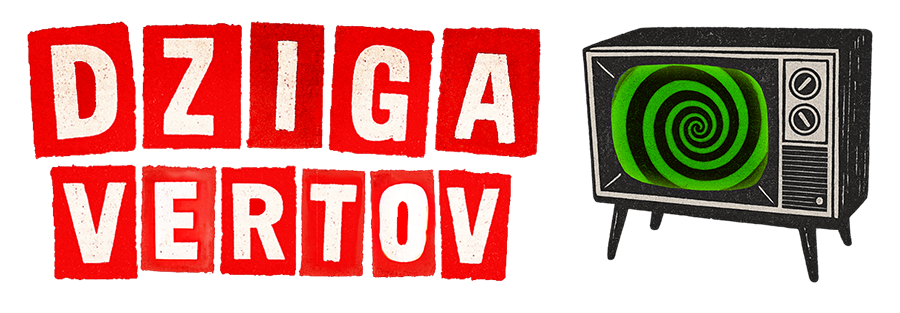The Evolution of Creative Writing: From Art to Strategic Marketing
For decades, creative writing belonged to the realm of art: short stories, poetry, chronicles, scripts. With digital transformation, the same linguistic muscle that sustains a novel now powers a brand strategy—building identity, driving differentiation, and structuring experiences across the customer journey. Creativity is no longer a “nice-to-have” garnish; it’s a business lever. Algorithms reward relevance and user experience, while audiences reward authenticity. At this crossroads, brands that write like humans—with voice, plot, tension, and purpose—win both memory and preference.
The Writer’s New Role in the Digital Ecosystem
The writer evolves from individual author to architect of brand experiences. They no longer deliver isolated “pieces”; they design narrative systems that coexist with SEO, UX design, data, and automation. Deliverables now include brand voice, tone guidelines, transmedia arcs, and sequenced flows (emails, onboarding, push). They collaborate with strategy, product marketing, growth, and design teams. Writers learn to read analytics, test hypotheses through A/B experiments, and document language decisions as design iterations: hypothesis → version → metric → learning. Text is no longer final; it’s an iterative product.
Where Literary Creativity Meets Business Goals
Literature contributes structure (conflict, arc, climax), rhetorical devices (metaphor, rhythm, parallelism), and a human lens. Marketing contributes focus: objectives, ICP (ideal customer profile), value proposition, positioning. Convergence happens when a brand tells a defensible truth (purpose, difference, impact) across formats and platforms without losing coherence. The result is narrative brand equity: a story people recognize and retell.
Foundations of Creative Writing Applied to Branding
The fundamentals of literature remain valid but are translated into business practice. The starting point: what the brand promises (value proposition), to whom (priority audience), and how (tone and personality).
Traditional Copywriting vs. Creative Brand Writing
| Aspect | Traditional Copywriting | Creative Brand Writing |
|---|---|---|
| Goal | Immediate response (click/sale) | Build long-term identity & relationships without losing performance |
| Horizon | Tactical campaign | Narrative system: multiple touchpoints with coherence |
| KPI focus | CTR, CPA | CTR/CPA + brand lift, share of voice, message recall |
| Resources | Direct formulas (AIDA, PAS) | Literary techniques (metaphor, symbols, scenes) applied commercially |
| Unit | Standalone piece | Narrative arc across pieces (series, seasons, chapters) |
Creative brand writing assumes sales are just an episode within a larger story.
Narrative Elements That Build Brand Identity
- Protagonist: the audience (not the brand).
- Desire: problem or aspiration creating tension.
- Guide: the brand provides tools, maps, context.
- Trial: evidence, demos, case studies, testimonials.
- Transformation: clear before/after (without hype).
- Voice: conscious choice of lexicon, syntax, rhythm.
- World: values, symbols, settings where the promise makes sense.
A consistent identity lowers CAC (customer acquisition cost) because narrative creates recognition and trust.
Brand Storytelling: Beyond Selling Products
Selling is a consequence. Brand storytelling organizes meaning: why we exist, for whom, what change we defend, and how it translates into experiences.
Narrative Archetypes in Brand Building
Archetypes (hero, caregiver, sage, rebel, explorer…) guide tone and plot. A “sage” fintech speaks with calm authority; a “rebel” brand leverages humor, provocation, and disruption. Define a primary and secondary archetype for nuance: e.g., Explorer (primary) + Sage (secondary) = adventurous yet evidence-based.
Exercise: Rewrite an “About Us” page in three archetypes. Measure which version drives higher recall and affinity via a 5-item survey.
The Customer Journey as Narrative Structure
Each stage demands a different chapter:
- Discovery: spark curiosity and context (“Why does this matter now?”).
- Consideration: resolve doubts with stories (cases, comparisons).
- Decision: close with social proof and operational clarity.
- Adoption: onboarding as the “first happy episode” (early wins).
- Loyalty: customer stories, roadmaps, community building.
Quick map: Emotional hook → Insight → Proof → Action → Epilogue (follow-up). Document each stage with a script.
Literary Techniques to Humanize Digital Brands
The gap between correct writing and memorable writing lies in technique.
Voice & Tone: Crafting Distinct Brand Personalities
- Voice (stable): who we are (bold, rigorous, approachable).
- Tone (adaptive): how we sound in context (technical in docs, playful on social).
Practical guide: do/don’t lists, before/after samples, target readability.
Checklist per piece: does it say something useful? Does it sound like us? Could a human sign it?
Metaphors, Symbols & Rhetorical Devices in Marketing
- Operational metaphors: product as “copilot,” “bridge,” “map.”
- Symbols: objects that condense values (a worn notebook = persistence).
- Repetition & rhythm: anaphoras and parallelism fix ideas.
- Antithesis: tensions illuminate contrasts (cost vs. investment).
- Sensory imagery: one strong image beats ten adjectives.
Digital Platforms & Adapting the Creative Message
Each channel has its own rules. The strategic writer masters them without losing identity.
Writing for Social Media: Brevity With Emotional Impact
- Hook in 3–7 words.
- Microstory (1–2 sentences) + soft CTA.
- Series (threads, carousels) with continuity: “Chapter 1/5.”
- Test: A/B hook, visual headline, pinned comment.
- Metrics: thumb stop rate, watch time, saves, shares.
Corporate Blogs & Long-Form Content as Business Literature
Long-form builds depth and authority. Structure: tension (why now), development (frameworks, cases), resolution (checklist/template), epilogue (resources). Weave story beats every 300–400 words to sustain attention.
Email Marketing as Narrative Sequence
Launch arc in 4 acts:
- Context: reader’s situation (empathy + insight).
- Conflict: cost of inaction (scene).
- Revelation: solution + social proof.
- Decision: clear offer + honest urgency.
Measure reply rate (B2B), click-to-open, and revenue per recipient.
Branded Content: Storytelling That Sells Without Selling
Stories where cultural value comes first, and the brand inhabits them naturally.
- Topic aligned with brand values (not product-centric).
- Real protagonists (users, allies, causes).
- Formats audiences willingly consume (mini-docs, series, newsletters).
- Subtle brand signals: tone, aesthetics, purpose, “call to meaning.”
Podcasts & Audio Narratives for Brands
Audio creates intimacy and memorability. Script each episode with journalistic + literary structure: sonic anchor, central idea, three scenes, circular closure. Publish SEO-friendly show notes with quotes and links.
Tools for Creative Brand Writers
Generative AI as a Creative Partner
- Ideation: 20 headline angles, 10 metaphors per insight.
- Tone variants: formal, confident, playful, minimalist.
- Scaffolding: outlines, briefs, glossaries, style guides.
- Quality control: banned claims, bias checks.
Golden rule: always re-write and curate; brand voice is human.
Analytics & Data Storytelling to Optimize Narratives
- Dashboards connecting story beats to metrics (reach → scroll → click → lead → sale).
- Smart A/B: test premises, not just synonyms.
- Cohorts: measure retention via story arcs.
- Qualitative insights: heatmaps, recordings, 10-min interviews to extract customer language.
Case Studies: Brands That Master Creative Writing
- Patagonia: activism narrative; planet as protagonist.
- Mailchimp: irreverent personality explaining complexity with humor.
- Slack: humanized B2B communication; “work is a conversation.”
- Magazines: Some magazines like ActionCom-Redaction are redefining education by linking academic training with digital content and communication.
Measuring the Impact: Metrics for Creative Brand Writing
Balance soft and hard metrics:
- Emotional engagement: dwell time, scroll depth, shares, saves.
- Business outcomes: CTR, lead quality, activations, conversions.
- Brand awareness: recall, branded search volume, NPS lift.
Ethics & Authenticity in Creative Brand Writing
- Avoid false urgency or unverified claims.
- Distinguish editorial content from ads.
- Respect cultural sensitivity and inclusivity in global storytelling.
The Future: Creative Writer as Brand Strategist
The role evolves into creative strategist or brand storyteller—bridging business, UX, data, and creativity.
Career roadmap: from copy execution → narrative system design → brand equity leadership.
Creative writing in the digital age is applied art with measurable impact. Success comes from combining literary sensitivity (voice, scenes, symbols) with strategic pragmatism (ICP, metrics, iteration). In a saturated market, the differentiator is not publishing more, but telling better: true, useful, well-designed stories that transform curiosity into trust, and trust into growth.
FAQs
What’s the difference between a brand storyteller and a copywriter?
A brand storyteller designs narrative systems tied to business metrics; a copywriter often executes campaign pieces.
How do you integrate AI without losing brand voice?
Use AI for ideation and scaffolding; human editing ensures consistency and authenticity.
Which metric should beginners prioritize?
Pick one per journey stage: dwell time (discovery), lead quality (consideration), activation (adoption).

